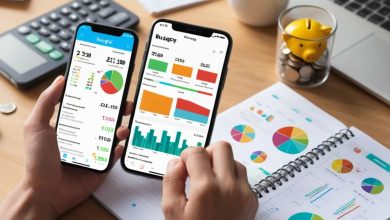Smart Budgeting Tips to Stretch Your Student Loans
Every semester, students face the challenge of stretching a lump-sum student loan to cover tuition, rent, textbooks, and daily living expenses. Without a clear plan, loan funds can disappear in weeks, leaving you scrambling for essentials. In this article, you will discover practical strategies to manage and optimize your loan disbursement. By following these smart budgeting tips, you can ensure your funds last the entire semester, minimize financial stress, and build valuable money-management skills that extend beyond college.
Understanding Your Student Loan Funds
Breakdown of Typical Student Loan Disbursement
Most student loans are disbursed in one of two ways: a single lump sum at the start of each academic year or split into equal payments at the beginning of each semester. When funds arrive, they often prioritize tuition and mandatory fees, with any remaining balance deposited into your bank account. Before allocating money to rent or daily needs, it is crucial to know exactly how much remains after all required charges. This understanding prevents overestimating your available cash and ensures you do not overspend early in the term.
Identifying Fixed vs. Variable Expenses
To build a sustainable budget, categorize your expenses into fixed and variable items:
-
Fixed expenses are nonnegotiable costs that remain consistent each month:
-
Tuition installments
-
On-campus housing or rent
-
Utility bills (electricity, water, internet)
-
Insurance premiums (health, renter’s)
-
-
Variable expenses fluctuate based on your lifestyle and choices:
-
Groceries and meals
-
Transportation (gas, rideshare, public transit)
-
Academic supplies and textbooks
-
Entertainment and social outings
-
By clearly distinguishing between these two types, you can prioritize essential payments first and allocate the remaining funds to variable categories.
Determining Your True Available Funds
Calculating your actual spending money begins with subtracting fixed costs from your total loan disbursement:
-
Note the total loan amount received for the semester.
-
Subtract all tuition charges and mandatory fees.
-
Deduct anticipated fixed living costs (rent, utilities, insurance).
-
The remainder equals funds available for variable expenses.
For example, if your loan disbursement is $10,000 and tuition/fees total $6,000, you have $4,000 left. If rent and utilities cost $1,200 for the semester, your true available funds for groceries, transportation, and discretionary spending amount to $2,800. Use this figure—rather than the full loan amount—when creating a budget.
Creating a Realistic Budget
Choosing a Budgeting Method
Selecting the right budgeting method can make tracking easier and more effective.
Zero-Based Budgeting vs. Envelope Method
-
Zero-Based Budgeting: Every dollar is assigned a purpose until your income minus expenses equals zero.
-
Pros: Offers complete control over each dollar, leaving no room for waste.
-
Cons: Requires detailed tracking and regular adjustments.
-
-
Envelope Method (Cash or Digital): You allocate a fixed amount to each spending category and place cash (or digital equivalents) into categorized “envelopes.”
-
Pros: Forces discipline, as once an envelope is empty, no more money can be spent in that category.
-
Cons: Physical cash can be inconvenient on a campus that operates primarily with cards; digital envelopes rely on app accuracy.
-
| Budget Method | Description | Best For | Ease of Use | Control Level |
|---|---|---|---|---|
| Zero-Based | Assign every dollar to a category until zero | Students who want precise control | Medium | High |
| Digital Envelope | Virtual envelopes in an app for each expense type | Tech-savvy students comfortable with apps | High | Medium |
| Physical Envelope | Cash-based envelopes for each category | Students preferring cash transactions | Low | Medium |
Choose a method that aligns with your lifestyle. If you prefer a hands-on, precise approach, zero-based budgeting might be ideal. If you want a visual, tangible system, the envelope method could work better.
Building Your First Monthly Budget
Creating an initial monthly budget involves a few key steps:
-
List All Income Sources
-
Loan disbursement amount (after tuition and fees)
-
Part-time job earnings (if applicable)
-
Scholarships or stipends
-
-
Categorize Expenses
-
Fixed: Rent, utilities, loan fees, insurance
-
Variable: Groceries, transportation, textbooks, entertainment
-
-
Assign Amounts Based on Priorities
-
Allocate roughly 50% of available funds to essential living costs (rent, utilities, groceries).
-
Reserve 30% for academic expenses (supplies, textbooks) and savings.
-
Dedicate 20% to discretionary spending (dining out, social activities).
-
Set aside a small buffer (5%–10% of variable funds) for emergencies.
-
-
Example Budget Breakdown
-
Rent (per month): $400
-
Utilities: $50
-
Groceries: $150
-
Textbooks/Supplies: $100
-
Transportation: $50
-
Entertainment: $50
-
Emergency Buffer: $25
-
Notice that the sum of these categories should match or stay within your true available funds. If expenses exceed your available amount, adjust discretionary spending or find ways to reduce fixed costs.
Tracking and Adjusting Weekly
Maintaining your budget requires consistent check-ins:
-
Tools for Quick Check-Ins
-
Spreadsheet Template (Google Sheets): A customizable grid for manual updates.
-
Mobile Budgeting Apps (e.g., Mint, YNAB): Automatically sync transactions and categorize expenses.
-
Notebook/Journal Method: For those who prefer writing by hand, noting every purchase daily.
-
-
Weekly Check-In Tutorial
-
Review the past week’s bank and app transactions.
-
Compare actual spending against budgeted amounts in each category.
-
Note any overspending and identify why it occurred (e.g., unplanned outing, impulse purchase).
-
Adjust upcoming week’s allocations to stay on track (e.g., slightly reduce the grocery budget if you overspent).
-
By dedicating just five minutes each week to this routine, you can catch discrepancies early and prevent budget shortfalls.
Cutting Unnecessary Expenses
Identifying Non-Essentials
Certain habits and habits of convenience can quickly deplete your budget. Consider these common “budget busters”:
-
Daily Specialty Coffee: A $4 latte every day adds up to $80 per month.
-
Multiple Streaming Subscriptions: Subscribing to several platforms but rarely using them.
-
Impulse Online Shopping: Buying trendy items without checking if you need them.
-
Frequent Rideshare Use: Choosing Uber or Lyft instead of campus shuttles or walking.
-
Unused Gym Memberships: Paying monthly for facilities you never visit.
By eliminating or reducing these expenses, you can free up a significant portion of your variable budget.
Cost-Saving Strategies on Essentials
Groceries & Meal Planning
-
Meal-Prep Weekly: Plan three to four meals in advance using affordable, bulk ingredients (rice, beans, frozen vegetables).
-
Buy Store Brands: Choose generic options over name brands to cut costs without sacrificing quality.
-
Use Campus Food Resources: Many campuses offer discounted meal plans or food pantry services.
-
Leverage Student Discounts: Some grocery apps and local stores provide discounts for students; always ask about student pricing.
Sample Weekly Meal Plan
-
Monday: Vegetable stir-fry with rice (bulk bag)
-
Tuesday: Bean tacos using canned beans and tortillas
-
Wednesday: Pasta primavera with frozen vegetables
-
Thursday: Omelet and toast (bulk eggs, generic bread)
-
Friday: Homemade chili (ground turkey, beans, canned tomatoes)
-
Saturday: Salad with mixed greens and canned tuna
-
Sunday: Leftover chili or pasta
Meal planning reduces food waste, prevents last-minute takeout, and ensures your grocery dollars go further.
Transportation Hacks
-
Public Transit Passes: Many colleges partner with local transit authorities to offer discounted semester passes.
-
Biking or Walking: If you live close to campus, biking or walking can replace expensive rideshare trips.
-
Campus Shuttle Services: Utilize free or low-cost shuttles instead of paying for each trip.
-
Carpooling: Share gas costs with classmates or roommates if you need to drive occasionally.
Compare an average semester bus pass ($120) to weekly rideshare spending ($15–$20 per trip). Over 15 weeks, a bus pass is clearly more economical.
Textbooks & Supplies
-
Library Reserves: Check if your required textbooks are available on reserve for in-library use or short-term loans.
-
Book Rentals & E-Textbooks: Services like Chegg and CampusBooks often offer substantial savings compared to buying new.
-
Buy Used or Earlier Editions: Course material rarely changes drastically from one edition to the next—an older edition can save 50%–75%.
-
Student Book Swaps: Join campus groups or online forums where students trade or sell used textbooks at low prices.
How to Find Free or Low-Cost Textbooks in 3 Minutes
-
Search your campus library catalog for the ISBN or title.
-
Visit book rental websites and compare rental versus purchase costs.
-
Post in student social media groups offering to trade or borrow.
These strategies can reduce the average semester textbook bill by hundreds of dollars.
Maximizing Income to Supplement Loans
Part-Time Jobs and On-Campus Work
On-campus employment provides a stable, predictable income stream while accommodating your class schedule. Common roles include:
-
Library Assistant: Shelving books, managing checkouts, and helping students find resources.
-
Research Assistant: Support faculty or graduate students on ongoing research projects—often higher pay than other campus jobs.
-
Tutoring: Offer academic support in subjects you excel in; pay ranges from $15 to $25 per hour.
-
Campus Facility Staff: Work at the gym, dining halls, or IT help desk.
Aim to work no more than 15–20 hours per week to avoid compromising academic performance. A part-time job earning $10–$12 per hour can contribute $600–$960 monthly, offsetting variable costs without depleting your loan balance.
Freelancing, Gig Work, and Side Hustles
If on-campus positions are unavailable or you need extra flexibility, consider off-campus gigs:
-
Freelance Writing or Graphic Design: Platforms like Upwork and Fiverr connect you with clients looking for quick projects.
-
Food Delivery or Rideshare Driving: If you have a car or bike, services like DoorDash or Uber Eats allow you to choose hours around your classes.
-
Online Surveys and Market Research: Sites like Swagbucks or Prolific offer small payouts ($5–$15) for completing surveys in your spare time.
-
Retail or Service Roles: Local cafes and retail stores often hire students for evening and weekend shifts.
| Gig Type | Estimated Hourly Earnings | Flexibility | Initial Requirements |
|---|---|---|---|
| Tutoring | $15–$25 | High | Demonstrated academic proficiency |
| Freelance Writing | $10–$30 | Medium | Writing samples and portfolio |
| Delivery Driver | $12–$20 | High | Vehicle or bike, valid driver’s license |
| Online Surveys | $5–$15 | Very High | Smartphone or computer, internet |
| Retail/Service | $8–$12 | Low | On-site presence, variable hours |
Select a gig that fits your schedule and skill set, ensuring it does not interfere with coursework or critical study time.
Scholarship & Grant Search
Even after loan disbursement, smaller scholarships and grants still can cover specific expenses and reduce reliance on loans. Use these steps to find last-minute awards:
-
Keyword Filters on Scholarship Platforms: Search for terms like “rolling deadline,” “no GPA minimum,” or “ongoing applications.”
-
Departmental and Local Awards: Many academic departments or community organizations offer niche scholarships that fly under the radar.
-
Micro-Scholarships: Platforms like RaiseMe reward students with small amounts ($50–$500) for completing simple tasks (attendance, volunteering).
Applying to a handful of these awards can add up—an extra $500 could cover an entire month’s groceries.
Using Financial Tools and Apps
Recommended Budgeting Apps
Modern budgeting apps simplify expense tracking and provide visual insights:
-
Mint: A free app that automatically categorizes transactions, shows spending trends, and sends overspending alerts.
-
YNAB (You Need a Budget): Emphasizes zero-based budgeting and offers comprehensive tutorials; subscription-based but highly effective for precise control.
-
PocketGuard: Shows how much “is in your pocket” by subtracting bills and savings goals from your income.
-
EveryDollar: Inspired by a zero-based approach, with a freemium model; easy for users who follow a strict monthly allocation.
When choosing an app, prioritize features such as automatic transaction categorization, cross-device syncing, and alert customization. These tools can save hours of manual tracking each month.
Creating a Simple Budget Template
Budget Template for Student Loans (Monthly)
Income:
Loan Disbursement (after tuition) $___
Part-Time Job Earnings $___
Scholarships/Stipends $___
Fixed Expenses:
Rent $___
Utilities $___
Loan Fees or Interest $___
Insurance $___
Variable Expenses:
Groceries $___
Transportation $___
Textbooks/Supplies $___
Entertainment $___
Savings/Emergency Buffer: $___
Total Expenses = $___
Remaining Funds = Income – Total Expenses
This template, whether in a spreadsheet or budgeting app, becomes the foundation for all spending decisions, ensuring you allocate every dollar with intention.
Automating Savings and Alerts
Automating small transfers into a dedicated “emergency fund” account helps you build a cushion without thinking about it. If you receive your loan in a lump sum, schedule a recurring monthly transfer of 5% of your variable funds into a savings account. Likewise, enable app notifications for overspending—for instance, if grocery spending exceeds the allocated $150, you receive an alert, prompting immediate adjustment.
Avoiding Common Budgeting Mistakes
Overestimating Income or Underestimating Expenses
Optimism bias can cause you to assume you’ll earn more money from a part-time job or neglect to account for fees. To avoid this:
-
Base income on conservative estimates (e.g., plan for 10 hours per week at $10/hour, not 20 hours).
-
Factor in fees like bank service charges, subscription renewals, or small ATM withdrawals.
-
Revisit and revise budget assumptions monthly based on actual data rather than projections.
Failing to Account for Irregular Expenses
Quarterly or annual expenses—such as course software licenses, vehicle registration, or professional exam fees—often sneak up without warning. To prepare:
-
List known irregular costs and their due dates for the year.
-
Divide the total by 12 to determine a monthly “sinking fund” amount (e.g., a $120 annual software fee becomes $10 per month).
-
Include this sinking fund contribution in your monthly budget to avoid scrambling when the bill arrives.
Ignoring Small Savings That Add Up
Seemingly trivial choices can cumulatively save hundreds over a semester:
-
Refillable Water Bottle: Instead of buying $1 bottled waters, refill a reusable bottle—you could save $30 monthly.
-
Student Campus Events: Many campus events provide free food or snacks. Attending once a week could replace a $10 dining-out habit.
-
Library Movie Rentals: Borrow DVDs or use free streaming through the library instead of paying $4–$5 for a rental.
-
Shared Textbooks: Partner with a classmate to split the cost and share a textbook, cutting your bill in half.
-
Campus Gym vs. Off-Campus Membership: Use the campus gym, which is often included in student fees, instead of paying $20 monthly at a private gym.
Over a semester, these micro-savings could free up $200 or more—funds that can bolster your emergency buffer.
Frequently Asked Questions
What Is the Best Way to Make My Student Loan Last a Full Semester?
Adopt a structured budgeting approach—choose either zero-based or envelope methods, allocate funds carefully across fixed and variable categories, and track expenses weekly. Cut nonessential costs, consider on-campus employment or side gigs to supplement income, and automate at least 5% of your variable funds into an emergency account. These steps create a robust framework ensuring you do not burn through loan funds prematurely.
How Do I Adjust My Budget if Loan Disbursement Is Delayed?
If your university delays disbursement, immediately reduce variable expenses: switch to budget-friendly meal options (e.g., campus food pantry, instant meals), use free campus transportation, and cut discretionary spending. Reach out to your financial aid office to request a short-term advance (bookstore or housing), and increase gig work hours (surveys, tutoring) until funds arrive.
Can I Use Budgeting Apps Even with Limited Data or No Smartphone?
Yes. Many budgeting platforms offer web-based dashboards accessible from any computer. If you lack regular internet access, maintain a simple paper ledger: record daily spending in categories, total weekly, and compare against planned amounts. The discipline of writing each transaction by hand often leads to better awareness of spending habits.
What Percentage of Student Loan Funds Should I Reserve for Emergencies?
Aim to set aside at least 5%–10% of your total variable fund as an emergency buffer. For instance, if $3,000 remains after covering fixed costs, reserve $150–$300 for unanticipated expenses (medical co-pays, course material shortages). This buffer prevents unforeseen costs from derailing your entire budget.
How Often Should I Reevaluate My Budget?
Perform a quick weekly check to tally actual spending vs. budgeted amounts and adjust for any discrepancies. Conduct a more thorough review at the end of each month: compare total income, total expenses, and savings, then revise the following month’s allocations based on real data. Regular reevaluation ensures your budget remains aligned with changing needs and circumstances.
Conclusion
Stretching a student loan across an entire semester requires foresight, discipline, and the right tools. Begin by understanding exactly how much money remains after tuition and fees, then choose a budgeting method—zero-based or envelope—that aligns with your preferences. Create a detailed monthly budget, track spending weekly, and implement cost-saving measures for essentials like groceries, transportation, and textbooks. Supplement your loan with on-campus work, side gigs, or small scholarships, and leverage budgeting apps to automate savings and alerts. By avoiding common pitfalls—such as overestimating income or ignoring irregular expenses—you’ll maintain control over your finances and keep your loan funds intact for the long haul. These smart budgeting strategies not only ease immediate financial pressure but also instill lifelong money-management skills, setting you up for success well beyond graduation.
Published on: 4 de June de 2025








